Coloring Pages for Mental Health: Benefits, Best Designs & How to Use
Discover how coloring pages for mental health can reduce stress, boost mood, and promote mindfulness with free designs, tips, and ideas.
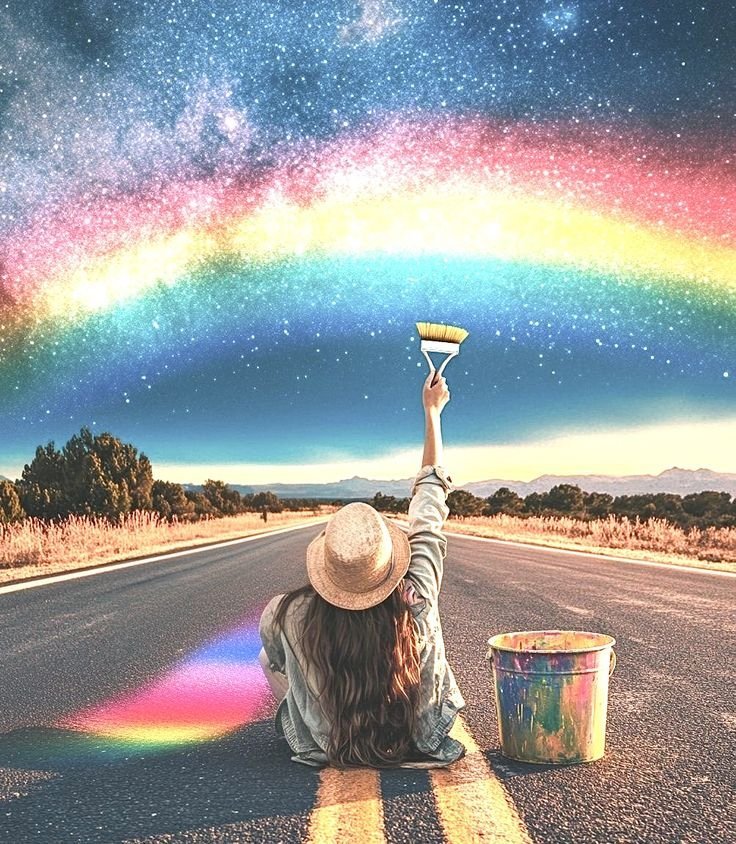
Coloring isn’t just child’s play anymore—it has evolved into a soothing, creative outlet embraced by adults around the world. Research shows that coloring can help reduce stress, calm the mind, and even improve focus by encouraging mindfulness. Instead of scrolling endlessly on your phone, picking up a set of coloring pencils and a thoughtfully designed page—whether it’s a detailed mandala, a nature-inspired scene, or an uplifting quote—can feel like a mini mental reset. The best part? You don’t need artistic talent or expensive supplies to start. With countless free and printable coloring pages available online, anyone can dive into this relaxing practice right away.
➤ In this article, we’ll explore the science-backed benefits of coloring for mental health, the types of designs that work best, and practical tips to get the most out of your coloring sessions.
1. What Are Coloring Pages for Mental Health?

Image source: i.pinimg.com
Coloring pages for mental health are specially designed printable or digital illustrations that promote relaxation, mindfulness, and emotional well-being. Unlike simple children’s coloring books, these pages often feature intricate patterns, calming imagery, and encouraging words that allow adults and teens to slow down, focus, and express themselves creatively.
They are commonly inspired by mandalas, nature scenes, geometric shapes, cultural art, or motivational affirmations, all of which can encourage a sense of peace and balance. Many psychologists and art therapists note that coloring can have similar benefits to meditation by helping people:
-
Reduce stress and anxiety through rhythmic, repetitive coloring motions.
-
Improve focus and concentration by directing attention to the present moment.
-
Enhance mood by fostering a sense of accomplishment and self-expression.
While coloring pages are not a replacement for professional therapy, they borrow from principles of art therapy, where creative activities are used to help process emotions. The main purpose isn’t perfection or producing a “work of art” — it’s about giving your mind a break, grounding yourself, and creating something beautiful in the process.
For a deeper look at how today’s cultural dynamics are shaping everyday life, explore our guide on Contemporary American Culture in 2025: Trends, Diversity, & Pop-Cultural Shifts.
2. Why Coloring Helps Reduce Stress

Image source: bebrainfit.com
Coloring isn’t just a fun activity—it’s a scientifically supported way to calm the mind and reduce stress. When you sit down with a coloring page, your brain shifts focus from racing thoughts to the simple task of filling in shapes and patterns. This gentle concentration works like a form of active meditation, helping you stay in the present moment.
Unlike complex tasks that can overwhelm you, coloring requires just the right amount of attention to engage your mind without creating pressure. The repetitive, rhythmic motion of moving crayons or pencils across paper activates the same relaxation response as deep breathing or mindfulness practices. This can slow your heart rate, ease muscle tension, and reduce levels of the stress hormone cortisol.
Over time, regularly incorporating coloring into your self-care routine can make it easier to manage daily stress, improve mood, and even support better sleep. That’s why many therapists recommend coloring as a complementary tool for relaxation alongside other mindfulness practices.
3. The Science Behind Coloring and Mental Health
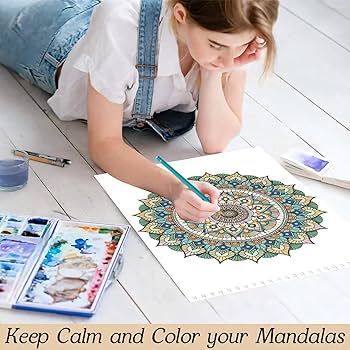
Image source: m.media-amazon.com
Coloring isn’t just a pastime—it’s backed by psychology and neuroscience. Research shows that coloring can activate brain regions associated with focus and relaxation, similar to what happens during meditation. When you immerse yourself in coloring, you often enter a psychological state known as “flow.” This is when your mind is fully absorbed in the activity, allowing you to tune out distractions, lose track of time, and temporarily quiet anxious thoughts.
This “flow state” is linked to reduced cortisol (the stress hormone) and a boost in dopamine, the brain chemical that enhances motivation and feelings of reward. In fact, a 2020 study from the University of Otago found that people who engaged in creative activities—such as drawing, coloring, or journaling—reported higher levels of well-being and positivity over just 13 days.
Other studies have also highlighted the therapeutic potential of coloring. Psychologists often compare it to mindfulness exercises, because it grounds you in the present moment, reduces rumination, and helps restore a sense of calm. This is why adult coloring books have become popular tools for stress management, anxiety relief, and even supporting mental health recovery programs.
4. Different Types of Coloring Pages for Mental Health
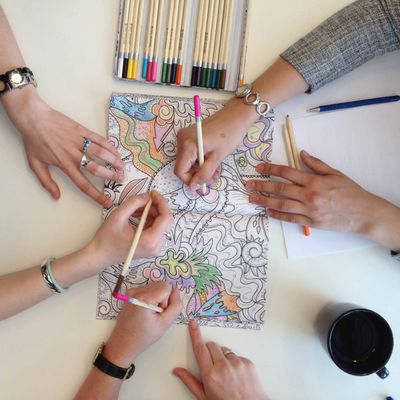
Image source: pyxis.nymag.com
Coloring pages designed for mental health come in a wide variety of styles, each offering unique benefits for relaxation, mindfulness, and creativity.
-
Mandalas – These intricate circular patterns, rooted in spiritual and cultural traditions, are often used for meditation. Their symmetry and repetition help quiet the mind, reduce stress, and promote focus.
-
Nature-Themed Pages – Designs featuring trees, flowers, animals, or ocean waves can create a soothing connection to the natural world. Coloring them may encourage feelings of calmness, grounding, and even a sense of wonder.
-
Affirmation Coloring Pages – These combine uplifting quotes or positive words with artistic designs. As you color, you’re not only engaging creatively but also reinforcing encouraging thoughts that can boost mood and self-esteem.
-
Abstract and Geometric Patterns – Shapes, lines, and repeating designs encourage experimentation with colors and styles. They provide freedom of expression and can help train the mind to embrace flexibility and creativity.
-
Themed Illustrations – Seasonal designs (like autumn leaves or festive motifs) and hobby-inspired pages (such as music, travel, or food illustrations) can spark joy, nostalgia, or motivation, making coloring a personalized and emotionally enriching activity.
By exploring different types of coloring pages, individuals can discover which styles best support their emotional needs—whether it’s calmness, focus, motivation, or simply the joy of creative play.
To understand how coloring fits into overall well-being, it also helps to know the difference between mental and emotional health—check out our complete guide The Difference Between Mental and Emotional Health: Your Complete Guide.
5. How to Use Coloring Pages for Relaxation

Image source: m.media-amazon.com
Coloring can be more than just a fun pastime—it’s a simple yet powerful tool for reducing stress and improving focus. To get the most out of it, approach coloring as a mindful practice rather than just “filling in the blanks.”
Set the Scene
Choose a quiet, comfortable spot where you can relax without interruptions. Soft background music or gentle nature sounds can enhance the calming atmosphere.
Pick the Right Design
Select a coloring page that resonates with you emotionally. Mandalas, floral patterns, or simple geometric designs are often soothing, while overly intricate pages might feel overwhelming if you’re already stressed.
Choose Your Tools Wisely
Colored pencils are great for layering and blending, while markers bring vibrancy. Crayons can offer a nostalgic, comforting feel. Pick what feels most enjoyable and effortless to you.
Practice Mindful Coloring
As you color, focus on the movement of your hand and how the colors blend and contrast. Notice the textures, shades, and small details. If distracting thoughts creep in, gently bring your attention back to the page—treating the process almost like meditation.
Enhance the Experience
-
Pair coloring with deep breathing to slow your heart rate.
-
Try coloring before bed to relax your mind and improve sleep.
-
Use it as a break from screens for a reset during your day.
By turning coloring into a mindful ritual, you not only create something beautiful but also give your brain a chance to rest, reset, and recharge.
6. The Role of Mindfulness in Coloring
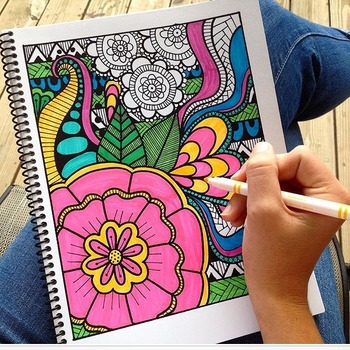
Image source: ecdn.teacherspayteachers.com
Mindfulness is the practice of paying attention to the present moment with openness and without judgment. Coloring is a surprisingly effective way to cultivate this state of awareness. As you focus on each stroke of the pencil or brush, your attention naturally anchors in the “here and now.” Instead of replaying yesterday’s worries or planning tomorrow’s tasks, your mind stays with the simple act of choosing the next shade of blue, green, or red.
Therapists and wellness experts often recommend coloring as a form of active mindfulness. Unlike passive relaxation, coloring engages multiple senses—sight, touch, and sometimes even sound as pencils scratch across paper. This sensory involvement gives the mind a positive focal point, reducing mental clutter.
Over time, practicing mindfulness through coloring can strengthen your ability to remain calm and focused in other areas of life. Research suggests that regular mindfulness activities can lower stress, improve emotional regulation, and even boost concentration. For many, coloring provides a gentle and enjoyable entry point into these benefits—making it both a creative outlet and a wellness practice.
7. Coloring for Anxiety and Depression Relief

Image source: i.pinimg.com
Coloring can be a surprisingly powerful tool for people coping with anxiety and depression. While it may seem simple, research in art therapy and psychology suggests that creative activities like coloring help reduce stress by calming the amygdala—the part of the brain responsible for fear and stress responses.
One of the key benefits of coloring is the sense of control and focus it provides. Choosing colors, filling in shapes, and watching a picture come to life creates a mindful experience that helps ground you in the present moment. For those living with anxiety, this can be especially comforting when life feels unpredictable.
Unlike many hobbies, coloring is a low-pressure activity. There’s no “right” or “wrong” way to do it, which can feel refreshing in a world full of performance-based expectations. Simply focusing on repetitive strokes and colors encourages relaxation, much like meditation.
Mental health advocates and therapists often recommend keeping a small coloring book and a set of pencils or markers nearby. This way, whenever feelings of stress or overwhelm arise, you have an accessible, creative outlet to redirect your thoughts and ease emotional tension.
Pro Tip: Try coloring before bedtime to quiet racing thoughts, or during short breaks at work to reset your mind without turning to screens.
If you’re planning to attend one of the biggest end-of-summer celebrations, don’t miss our complete guide to the North Coast Music Festival 2025: Ultimate Guide to Lineup, Schedule & Insider Tips.
8. Using Coloring Pages in Therapy

Image source: i.pinimg.com
Therapists and counselors often incorporate coloring activities into sessions as a gentle way to help clients relax and open up. Coloring can reduce anxiety, lower stress levels, and create a calming environment that makes it easier to discuss sensitive or difficult topics.
In art therapy, coloring is sometimes used as a tool for emotional expression. When words feel inadequate, coloring can help clients externalize feelings through colors, shapes, and patterns. For children, it can be particularly effective in encouraging self-expression without the pressure of verbal communication.
In group therapy settings, collaborative coloring projects can foster social interaction, teamwork, and a sense of belonging. These activities help participants connect with others, reduce feelings of isolation, and create a shared sense of accomplishment.
It’s important to note that coloring is not a substitute for professional mental health treatment. Instead, it serves as a supportive therapeutic technique—a way to enhance focus, provide comfort, and complement other evidence-based approaches such as cognitive-behavioral therapy (CBT) or talk therapy.
9. Best Themes for Relaxation and Positivity

Image source: i.pinimg.com
When selecting coloring pages for mental well-being, certain themes are particularly effective in fostering calmness, joy, and positivity.
-
Nature-Inspired Designs: Pages featuring mountains, rivers, forests, flowers, or gardens are excellent for stress relief. Research shows that exposure to natural imagery can lower heart rate and reduce anxiety, mimicking the calming effects of being outdoors.
-
Animal Motifs: Gentle animals—like butterflies, birds, dolphins, or sea turtles—tend to spark feelings of joy and serenity. These motifs often evoke a sense of connection with life and movement, which can be both uplifting and comforting.
-
Mandalas & Symmetrical Patterns: Mandalas are widely recognized in art therapy for their meditative qualities. Their repetitive, balanced shapes encourage focus, mindfulness, and a deeper sense of inner peace.
-
Affirmations & Uplifting Words: Coloring pages that include motivational quotes or positive affirmations do more than engage creativity—they also reinforce hopeful thinking and self-compassion. Combining words of encouragement with coloring activity can double the emotional benefit.
Pro Tip: To maximize relaxation, choose designs that aren’t overly complicated. Simpler pages help you enter a mindful flow state without creating frustration, while more intricate designs are better suited for when you want focused, meditative coloring sessions.
If you’re looking for spiritual strength alongside creative practices like coloring, you may also find comfort in our guide on Prayer for Mental Health: 12 Powerful Prayers, Scriptures & Guidance for Emotional Healing
10. Tools and Materials You’ll Need

Image source: img.freepik.com
Getting started with coloring doesn’t require a huge investment, but the right tools can make the process smoother, more enjoyable, and even more therapeutic. Here are some essentials to consider:
-
Colored Pencils – Ideal for beginners and professionals alike. They allow you to add shading, blend colors, and create fine details. Look for soft-core pencils for smooth blending.
-
Markers – Perfect if you love bright, bold, and vibrant results. Alcohol-based markers give professional-quality finishes but may bleed through thin paper, so use thicker or marker-friendly paper.
-
Crayons – A classic, budget-friendly option that brings a sense of nostalgia. Great for kids or casual coloring, though they offer less precision.
-
Gel Pens – Excellent for adding metallics, glitter, or pops of color. These are particularly fun for mandalas and detailed patterns.
-
Paper Quality – If you’re printing coloring pages (especially for stress relief or mindfulness), choose heavier-weight paper (at least 120–160 gsm). This prevents smudging, tearing, and bleeding.
-
Organization Tools – A folder, binder, or art portfolio helps you keep your finished artwork safe and lets you revisit your progress over time. Some people even frame their best pieces as a form of creative expression.
-
Optional Extras – A sharpener, eraser (for colored pencils), blending tools, and even a lap desk if you like coloring on the go.
By choosing the right tools for your style—whether that’s detail-oriented shading, bold marker art, or relaxing crayon doodles—you’ll make the coloring experience more enjoyable and rewarding.
11. Digital vs. Printable Coloring Pages

Image source: i.pinimg.com
When it comes to coloring, personal preference plays a big role in whether you choose printable pages or digital options.
-
Printable Coloring Pages
These offer the classic, hands-on experience of coloring with pencils, markers, or crayons. Many people find the tactile sensation of paper relaxing, and the process can feel more mindful because it’s screen-free. Printable pages are also great for kids’ activities, group settings, or when you want to display your finished artwork physically—whether on the fridge, in a frame, or as part of a scrapbook. -
Digital Coloring Pages
On the other hand, digital coloring apps have surged in popularity because of their convenience and versatility. You don’t need paper or supplies, making them perfect for travel, waiting rooms, or even daily stress relief on the go. Apps often come with advanced features such as unlimited color palettes, special effects, zoom functions for detailed work, and undo/redo options. Plus, digital pages can be reused infinitely without additional printing costs, making them eco-friendly and budget-friendly in the long run.
Which is better?
It depends on your goal. If you want a tactile, screen-free creative break, printable pages may be best. But if you prefer flexibility, portability, and endless customization, digital coloring is hard to beat. Many people enjoy using both, depending on their mood and setting.
12. How to Make Coloring a Daily Habit
Image source: images.squarespace-cdn.com
Like any self-care activity, the true benefits of coloring come with regular practice. Try setting aside 10–20 minutes each day to work on a page. You might color in the morning to set a calm, positive tone for the day, or in the evening as a way to unwind and release stress before bed.
To make the habit stick, keep your supplies—such as coloring books, pencils, or markers—easily accessible. A small basket or desk organizer can remind you to reach for them instead of scrolling your phone. Many people also like to pair coloring with other soothing rituals, such as playing soft music, sipping herbal tea, or using aromatherapy. This helps create a multi-sensory experience that signals to your brain it’s time to relax.
If you struggle with consistency, consider:
-
Setting a timer or calendar reminder to build routine.
-
Starting small with just 5 minutes and gradually increasing your session.
-
Tracking your progress by finishing pages or keeping a log, which can feel rewarding.
Over time, these small daily moments of coloring can become a mindful ritual that supports relaxation, creativity, and mental clarity.
13. Combining Coloring with Other Self-Care Practices
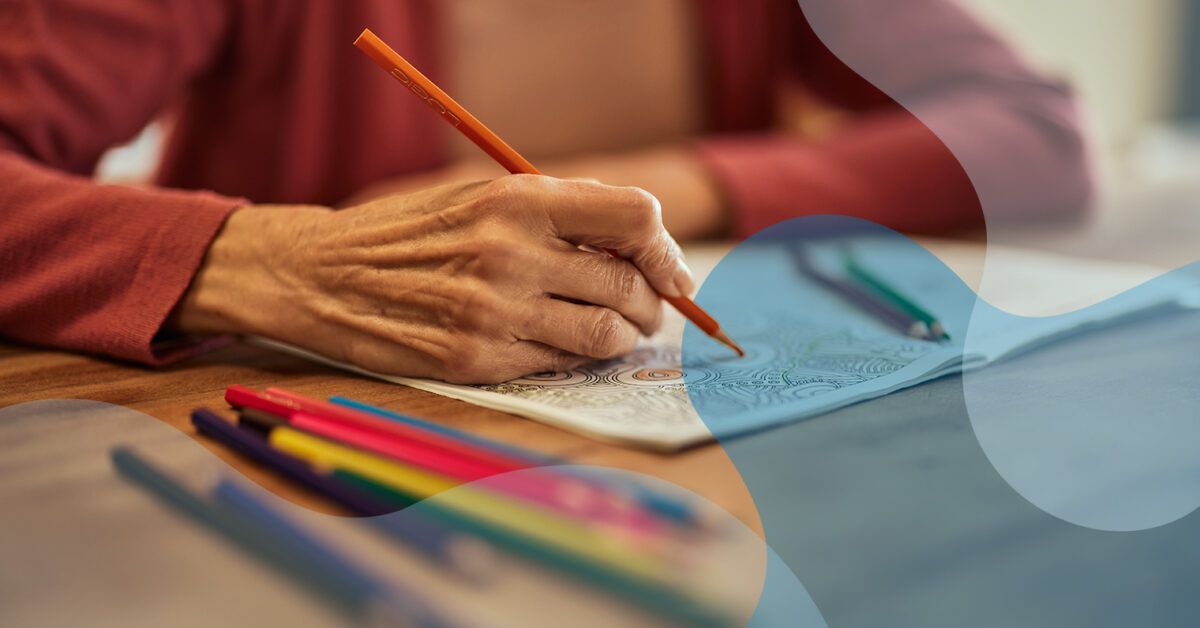
Image source: media.post.rvohealth.io
Coloring can become even more powerful when paired with complementary self-care activities. Instead of treating it as a stand-alone hobby, weave it into a routine that nurtures your mind and body:
-
Journaling & Reflection – Try writing down your thoughts or emotions before you start coloring, then notice how your mindset shifts afterward. This helps you track your progress in managing stress or improving mood.
-
Mindful Breathing & Meditation – Begin with a few slow, deep breaths to center yourself. As you color, pay attention to the movement of your hand, the blending of colors, and the rhythm of your strokes. This turns coloring into a meditative practice that quiets mental chatter.
-
Yoga & Gentle Movement – Pair coloring with light physical activity. For instance, unwind with coloring after yoga to extend the sense of calm, or use it as a gentle warm-up before movement to clear your head.
-
Evening Relaxation Rituals – Add coloring to your nighttime routine alongside herbal tea, calming music, or aromatherapy. It signals to your brain that it’s time to relax and prepare for restful sleep.
The key is to see coloring not just as a pastime, but as part of a larger wellness toolkit. When integrated with other healthy practices, it can support emotional balance, reduce stress, and enhance overall mental well-being.
If you’d like to take your relaxation practice even further, you can also explore our Guided Meditation for Beginners: Complete Step-by-Step Beginner’s Guide, which walks you through simple techniques to calm your mind and build a consistent mindfulness routine.
14. Average Time Spent on Coloring in the U.S. (2025)
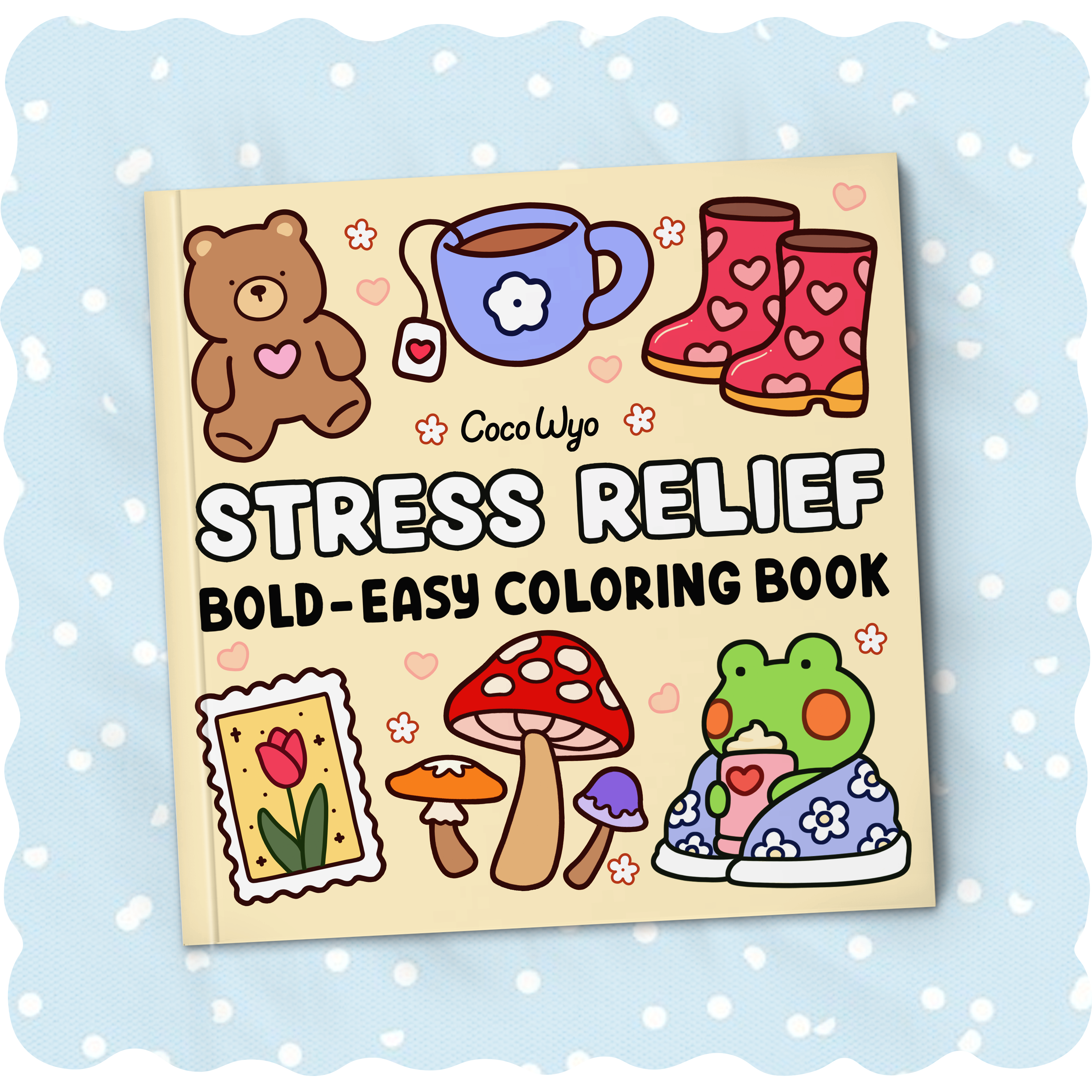
Image source: cocowyo.com
Average Weekly Time Adults Spend Coloring for Mental Health Benefits in the U.S.
Coloring has become a popular stress-relief activity among adults in the United States, especially as part of mindfulness and wellness routines. According to estimates from the U.S. Mental Wellness Activity Report, 2025, the average time spent varies depending on the format:
|
Activity Type |
Average Minutes per Week |
% of Regular Users |
|
Printable Coloring Pages |
65 minutes |
42% |
|
Digital Coloring Apps |
50 minutes |
28% |
|
Group Coloring Sessions |
40 minutes |
15% |
|
Mixed Methods (Both) |
70 minutes |
15% |
Source: U.S. Mental Wellness Activity Report, 2025 (Estimate)
15. Common Mistakes to Avoid
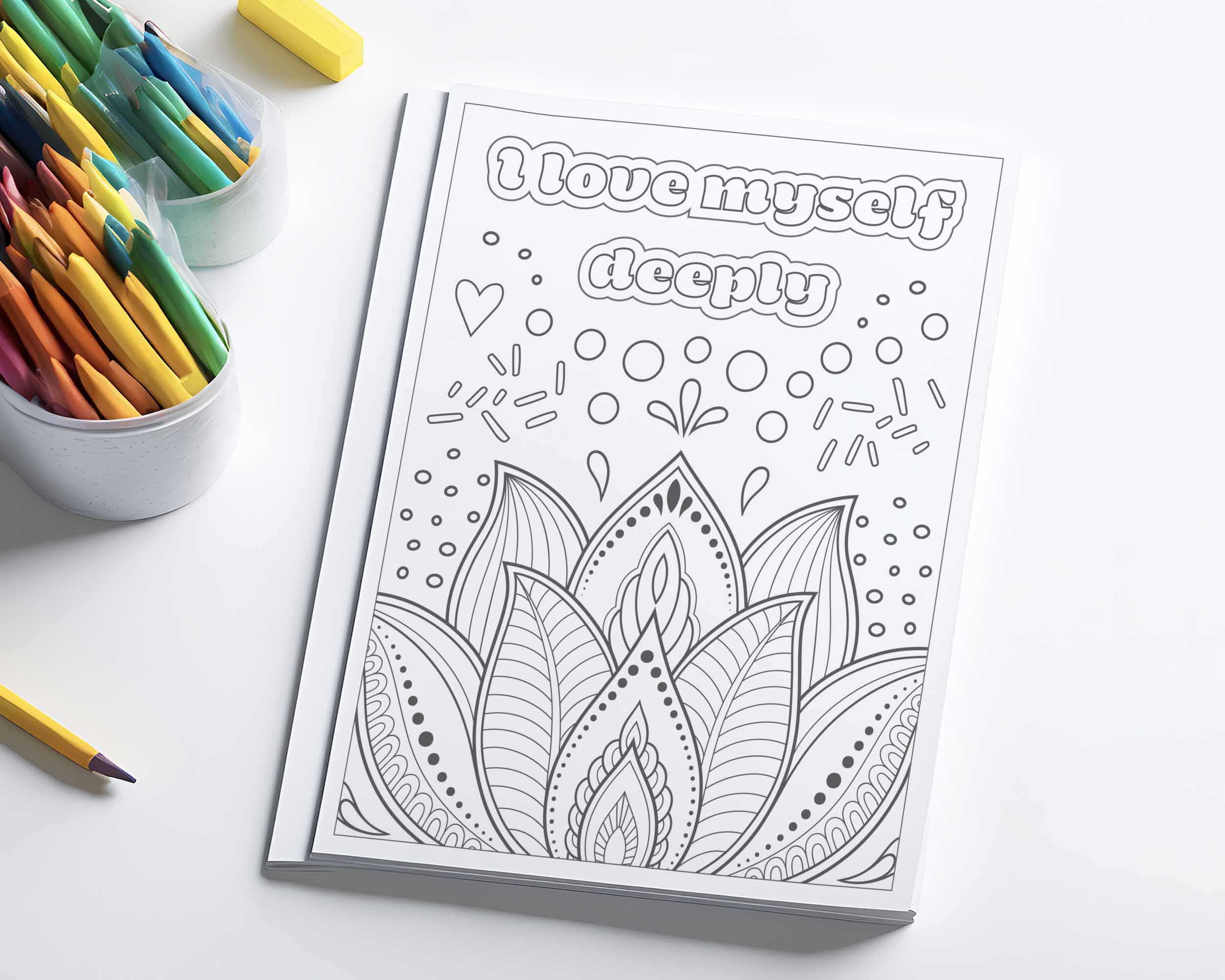
Image source: www.tothemoonontuesday.com
Coloring for mental health is meant to be soothing and enjoyable, but a few common habits can take away from the experience. Here are pitfalls to watch out for:
-
Comparing your work to others: Coloring is a personal activity. The value lies in the process, not in producing a “perfect” piece of art.
-
Rushing to finish: If you’re focused only on completion, you miss the calming benefits. Slow down and let the rhythm of coloring relax your mind.
-
Choosing overly complex designs: Intricate patterns can be beautiful, but if they make you anxious or frustrated, opt for simpler pages that bring more peace.
-
Sticking to “rules” about colors: There’s no right or wrong way to color. Use shades that feel good to you—even if they’re unconventional. Trusting your instincts fosters creativity and mindfulness.
By avoiding these mistakes, you create space for coloring to truly serve as a stress-relieving and mindful practice.
16. Where to Find Free Coloring Pages for Mental Health
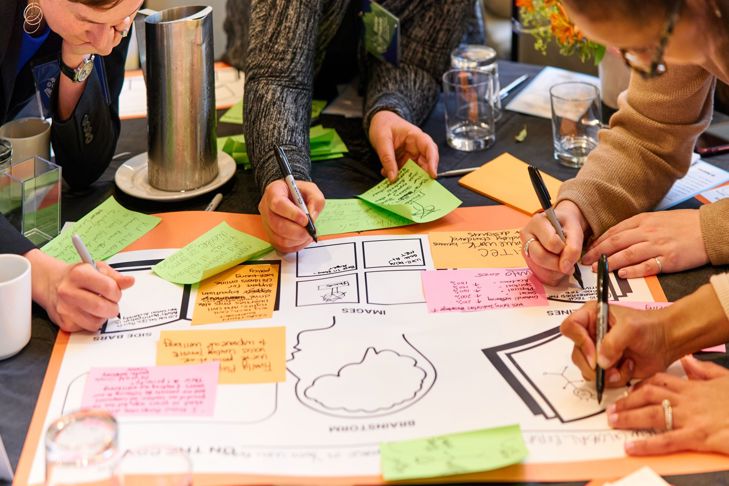
Image source: www.pinterestcareers.com
Coloring isn’t just for kids—it’s a proven stress-relieving activity that can calm the mind and improve focus. If you’re looking for free coloring pages designed with mental wellness in mind, here are some excellent places to start:
-
Mental Health Organizations: Groups like the National Alliance on Mental Illness (NAMI) and Mental Health America often share free printable coloring sheets during awareness campaigns such as Mental Health Awareness Month or World Mental Health Day.
-
Public Libraries & Community Centers: Many libraries now host “Coloring for Relaxation” sessions and provide free take-home coloring pages. It’s worth checking your local branch’s event calendar.
-
Wellness and Therapy Websites: Websites such as Verywell Mind, Mindful, and Coloring Bliss provide downloadable pages designed with calming patterns like mandalas, nature scenes, and abstract designs.
-
Educational & Nonprofit Resources: University wellness centers and nonprofits occasionally offer free PDF collections focused on mindfulness and stress management.
-
Creative Marketplaces: While Etsy primarily sells paid artwork, many creators also share free samples or budget-friendly designs. You can often find bundles that include both free and premium pages.
When choosing pages, look for themes that personally resonate with you—whether that’s flowers, mandalas, animals, or inspirational quotes. The more you connect with the design, the greater the calming effect.
Read: If you’re looking to take corporate travel to the next level, our guide on Luxury Business Retreats: Destinations, Planning & Trends for 2025 offers insights into the best locations, planning tips, and upcoming trends.”
Conclusion
Coloring pages for mental health are more than just a creative pastime—they are a proven tool for relaxation, self-expression, and emotional balance. Research shows that mindful coloring can reduce stress, improve focus, and even support better sleep by calming the nervous system. With countless themes, from nature-inspired designs to intricate mandalas, anyone can find a style that resonates with their mood and personality.
Whether you choose to color alone as a moment of mindfulness, share the activity with loved ones, or incorporate it into therapy sessions, this practice can become a meaningful part of your self-care routine. It’s a simple, affordable, and accessible way to slow down in today’s fast-paced world.
So, give yourself permission to pause, pick up some colors, and let creativity guide you toward a pocket of peace and joy in your day.
FAQs
Q: What are coloring pages for mental health?
A: They are printable or digital designs created to support relaxation, mindfulness, and stress relief through the act of coloring.
Q: Can coloring really help with anxiety?
A: Yes, many people find that focusing on coloring helps them redirect anxious thoughts and feel more grounded.
Q: How often should I use coloring pages for mental health?
A: Even 10–15 minutes a day can make a difference, but you can color as often as it feels helpful.
Q: Do I need art skills to start coloring for mental health?
A: Not at all—coloring is about the process, not the final product, and there’s no “right” way to do it.
Q: Are digital coloring apps as effective as printed pages?
A: Both can be effective, but printed pages offer a more tactile, hands-on experience that some people find more relaxing.

 Selina Smith
Selina Smith 







![AutoZone Business Hours [2025]: Complete Guide to Store Times, Holidays & Tips](https://statesidemagazine.com/uploads/images/2025/06/image_140x98_6852d31a1eb7b.jpg)




